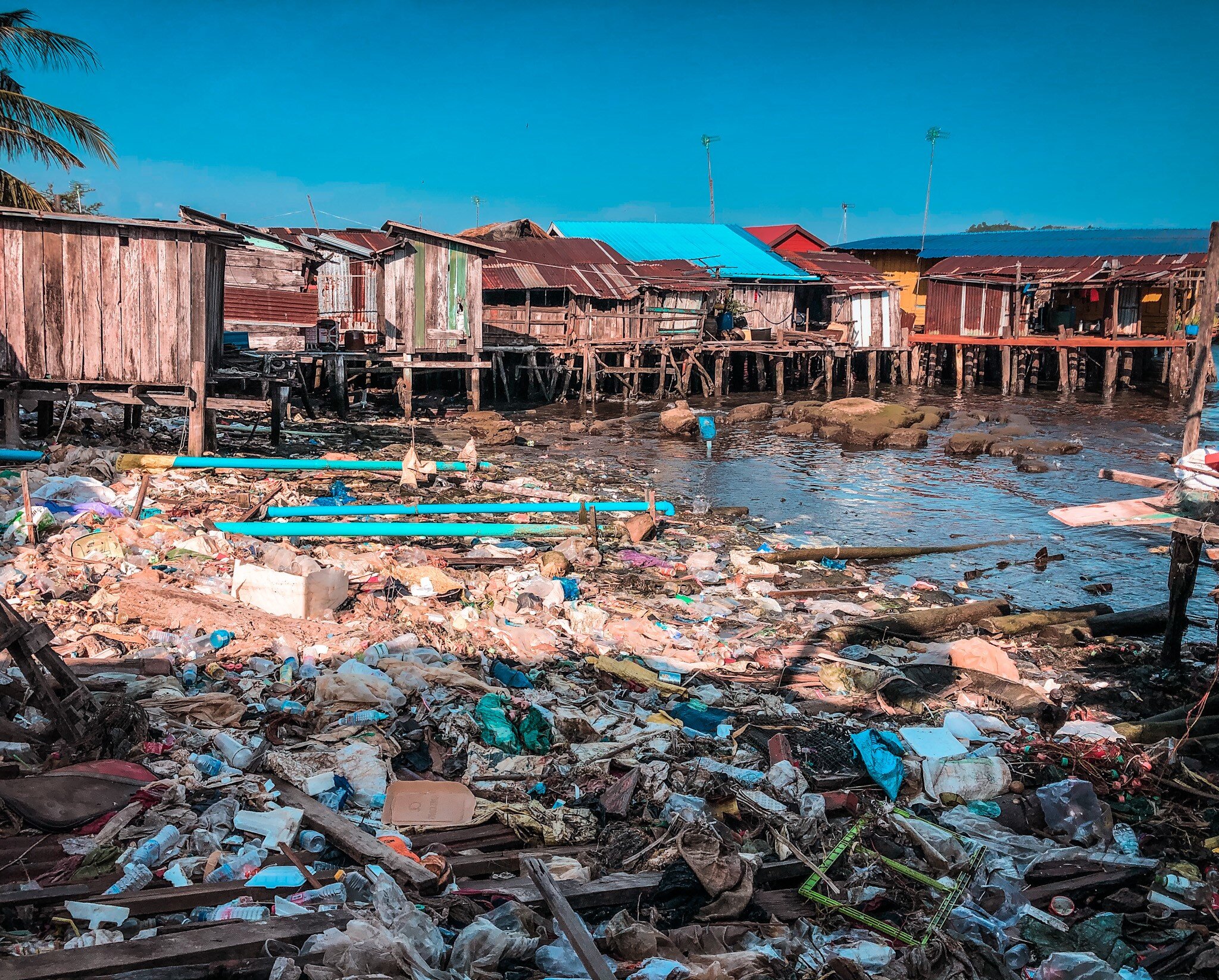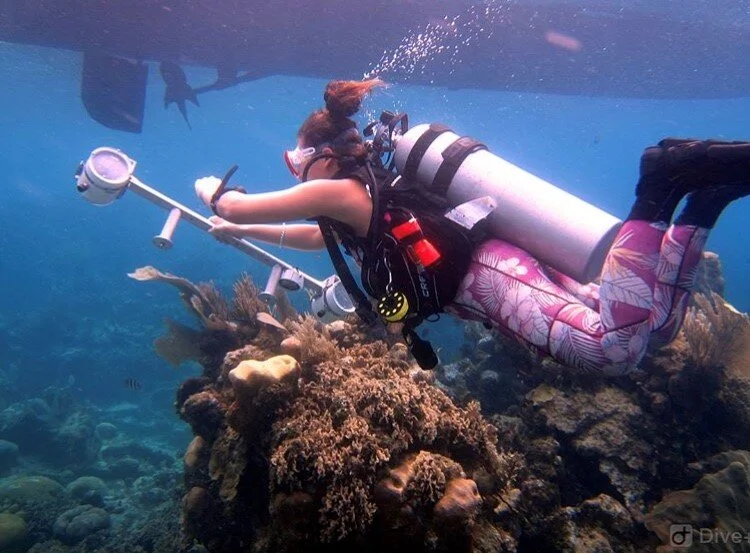Travelling the Tropics
BY MARGAUX MONFARED
Coral reefs, the cities beneath the waves only cover less than 1% of the Earth’s surface but are home to 25% of all known marine life. They provide us with food, protection, jobs and medicine, yet we destroy, damage and degrade these intricate ecosystems mercilessly. We have now decimated 50% of coral reefs worldwide. At this rate, they could all be destroyed come the end of the decade.
Since embarking on my journey through the tropics, I have come to understand that some of the primary threats to the world’s coral reefs include climate change, pollution and unsustainable and destructive fishing. That is not to say there aren’t others! The common denominator in each of these threats: humans. Climate change, albeit a natural phenomenon, in which the earth’s temperature rises, usually occurs over hundreds of thousands of years and is now accelerating uncontrollably due to human activities. Coral bleaching for example is the direct effect of these warming temperatures. Pollution comes in many forms including toxic chemicals and solid waste (plastic) which is all caused by a variety of human activities such as burning fossil fuels, deforestation, oil spills and pesticides to name a few. A perfect example of unsustainable fishing is sharks. Humans kill over 100 million shark species annually as a result of the heart-breaking misconception, popularised by movies such as Jaws, that sharks should be feared. Despite this irrational fear, we also hunt sharks and other species of fish because we consider them a highly valuable and desirable species.
Plastic Beach, the effects of human induced destruction, Image by Margaux.
Plastic Rubbish left on a Cambodian Coral Reef, Image by Matt Glue.
Despite these threats posed by humans, there are countless people who strive to protect our oceans and the array of species that call coral reefs their homes. Not all hope should be lost!
Having finished both by BSc and MSc in Marine Biology at University in the U.K, I have been lucky enough to work on coral reefs around the globe including Indonesia, Cambodia, the Maldives and Honduras, so let’s begin with my current tropical adventure.
CAMBODIA
Captivating the beauty of Cambodian Reefs, Images by Matt Glue.
I am working as a Marine Scientist for Song Saa Foundation, a non-profit organisation based in the Koh Rong Archipelago. To date very little research has been conducted on coral reefs in Cambodia opening us up to an array of research questions. Although, the region is still subject to extensive fishing pressure and destruction in some areas, I was astounded at the realisation that Cambodia is home to some undeniable underwater beauty. I was particularly amazed at the splendour around the outer island reefs near Koh S’Dach where Kuda Divers, a responsible conservation and dive centre are located. In my opinion, during the right season, the reef life and coral cover can be compared to a handful of regions in the coral triangle.
My days are extremely varied which I love as I never know what to expect. When we have volunteers, I teach a Coral Reef Ecology course called the Ocean Stewardship Program (OSP) which aims to refine scientific dive skills whilst acquiring an in depth understanding of marine ecosystems and its inhabitants. When I am not leading the OSP, I conduct scientific research around the Song Saa Reserve, home to a shallow water fringing reef. Our most exciting project to date has been ‘coral gardening’, an important conservation tool to help replenish the reef from recent coral bleaching events, whilst mitigating further ecosystem decline. Our preliminary studies are assessing the effects of various sites and coral pod types on the optimum survival and growth rates for a plethora of coral genotypes.
Margaux checking her equipment before she jumps into the beautiful Cambodian waters.
Additionally, I have worked with some incredible scientists through partnerships with Fauna and Flora International (FFI) and Kuda Divers. Together we form part of the Combined Cambodian coral reef monitoring network. One of our main objectives is to assess the health of the surrounding reefs in the Archipelago since the establishment of the Kingdoms first MPA in 2016, known as the Marine Fisheries Management Area (MFMA). Data collection includes, benthic, fish, invertebrate and impact surveys. Benthic surveys are filmed using a GoPro and later analysed using the point intersect method. Invertebrate and Impact surveys are conducted using the belt transect method where we unfortunately note a lot of disregarded fishing gear and rubbish. Fish surveys utilise traditional underwater visual census (UVC) and size estimates of target-fished species are also noted as community fishermen rely on their catch for their livelihood. The data is then presented to the Cambodian Fisheries Administration in order to produce sustainable fishing zones for the communities as well as assess the health of the reef in the MFMA. Amongst all of this we also conduct weekly beach clean ups with the local school children to encourage them to recycle and look after their beautiful Prek Svay Village.
Prek Svay Village School children taking part in a beach clean up, Images by Margaux.
MALDIVES
Coral Restoration project situated in Noonu Atoll Maldives, Images by Margaux.
Prior to heading to Cambodia, I worked on one of the largest coral restoration projects in the Maldives at Velaa Private Island. As you may have heard, the Maldives was devastated by two coral bleaching events, the first in 1998 and the second in 2016, which annihilated approximately 60% of the country’s reefs. The five mid-water floating nurseries were created to replenish the lost Maldivian corals. Together they can hold over 10, 000 different coral fragments along their ropes, including Pocillopora (fast growing tabular species), Heliopora (blue coral) and Physogyra (bubble coral). Here, I was taught vital coral nursery skills from some amazing women including Maren Toor (founder of the mesmerising insta account a.coral.a.day) and Megan Clampitt, the coral mum! I acquired skills that allowed me to work daily in the nurseries and at the transplant sites, collecting growth measurements, transplanting corals, conducting fish and benthic surveys, microfragmenting, coral recruitment studies and identifying suitable new transplant areas. As well as working in the water daily, we provided guests with the opportunity to attend ‘Marine Monday’, a series of interactive presentations designed to elucidate their knowledge on marine ecosystems. I absolutely loved every minute of my time here and I have used the skills a lot in Cambodia!
CARIBBEAN
I voyaged to the Caribbean to collect my undergraduate dissertation data in collaboration with Operation Wallacea. I spent two months in Honduras on the island of Utila, the smallest of the Bay Islands. Utila is situated at the Southern end of the Mesoamerican Barrier Reef System supporting a diverse fish community. Research focused on the effects of two different dive techniques to study underwater fish populations. By using a Stereo video System (SVS) to collect fish biomass, abundance and minimum approach distance, we were able to determine the effects of dive gear choice on fish behaviour across a depth gradient. We compared conventional Open Circuit (OC) SCUBA, which traditionally produces lots of noise, with the new advances in silent dive technology, known as a Closed Circuit Rebreather (CCR). As diving can be known to be intrusive to coral reefs it is important to understand the effects of these disturbances on their inhabitants. You can find more in depth information on a paper we published in 2017 here. I later returned to Utila for two more summers in order to gain my PADI Divemaster qualification as well as lead the SVS team.
INDONESIA
My first trip to the Coral Triangle was during my initial summer at University, where I met one of my best friends, Cath Cushenan, who is now an awesome shark advocate and all around badass water woman! We travelled to the incredible island known as Hoga situated in the Wakatobi Reserve, where I spent a month working as a research assistant for Operation Wallacea. I assisted a PhD student in the collection of interspecific behavioural data on anemonefish. I then spent two weeks on a liveaborad named the ‘Bintang Sedang’ monitoring the surrounding reefs by conducting fish, coral and invertebrate surveys. Spending my days underwater amongst vibrant coral reef life sparked my passion to explore the oceans further and from that moment I embarked on my unforgettable journey in underwater research.
For every hour I spend underwater, I spend twice as much time at my computer analysing and inputting data. I have a love for traveling and writing and I truly believe that complex scientific research is incomplete until it has been eloquently and emotively communicated. This will allow you to inspire change in people from wherever you are in the world. I hope we can save these intricate and vibrant ecosystems from total devastation so that future generations can marvel in their magnificence.
You can keep up to date with my travels via my Instagram account @oceanmargaux.










